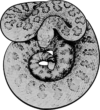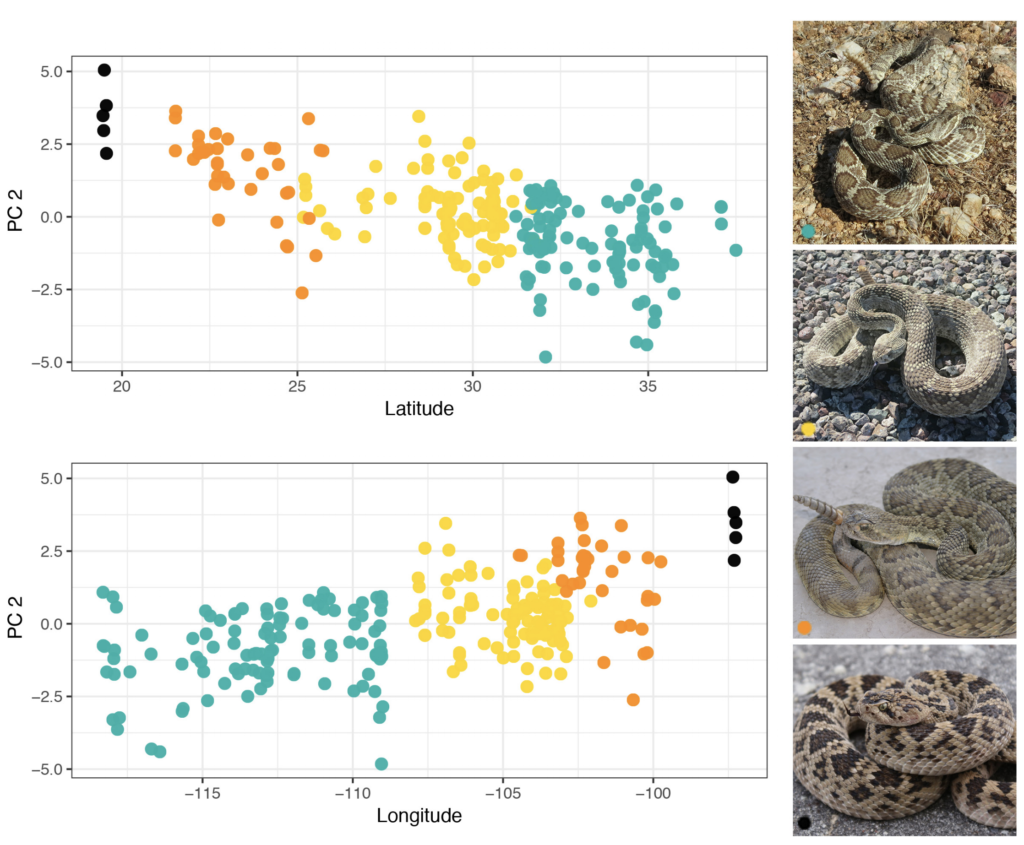Our new paper with colleagues Jessica Watson and Jesse Meik (Tarleton State University) is now online at Zootaxa! We examine range-wide morphological variation in the Mohave Rattlesnake (Crotalus scutulatus) to investigate how morphology, in light of phylogeographic and population genetic patterns, provides insight into the species limits within this wide-ranging pitviper.
Congratulations to Jessica and all co-authors!
Watson, J.A., C.L. Spencer, D.R. Schield, B.O. Butler, L.L. Smith, O. Flores-Villela, J.A. Campbell, S.P. Mackessy, T.A. Castoe, and J.M. Meik. 2019. Geographic variation in morphologyin the Mohave Rattlesnake (Crotalus scutulatus Kennicott 1861) (Serpentes: Viperidae): implications for species boundaries. Zootaxa 4683: 129-143.
Abstract
The Mohave Rattlesnake (Crotalus scutulatus) is a highly venomous pitviper inhabiting the arid interior deserts, grasslands, and savannas of western North America. Currently two subspecies are recognized: the Northern Mohave Rattlesnake (C. s. scutulatus) ranging from southern California to the southern Central Mexican Plateau, and the Huamantlan Rattlesnake (C. s. salvini) from the region of Tlaxcala, Veracruz, and Puebla in south-central Mexico. Although recent studies have demonstrated extensive geographic variation in venom composition and cryptic genetic diversity in this species, no modern studies have focused on geographic variation in morphology. Here we analyzed a series of qualitative, meristic, and morphometric traits from 347 specimens of C. scutulatus and show that this species is phenotypically cohesive without discrete subgroups, and that morphology follows a continuous cline in primarily color pattern and meristic traits across the major axis of its expansive distribution. Interpreted in the context of previously published molecular evidence, our morphological analyses suggest that multiple episodes of isolation and secondary contact among metapopulations during the Pleistocene were sufficient to produce distinctive genetic populations, which have since experienced gene flow to produce clinal variation in phenotypes without discrete or diagnosable distinctions among these original populations. For taxonomic purposes, we recommend that C. scutulatus be retained as a single species, although it is possible that C. s. salvini, which is morphologically the most distinctive population, could represent a peripheral isolate in the initial stages of speciation.

